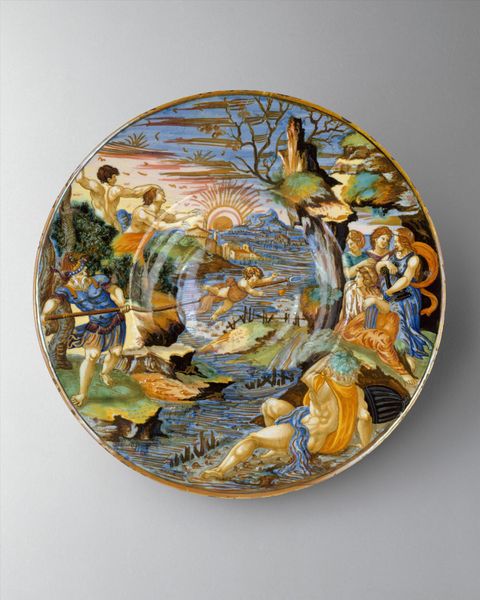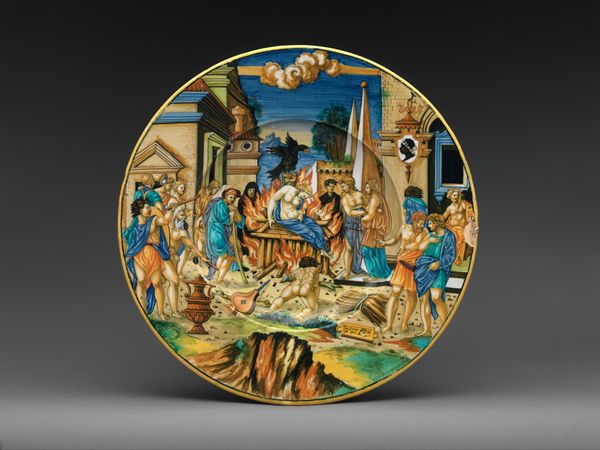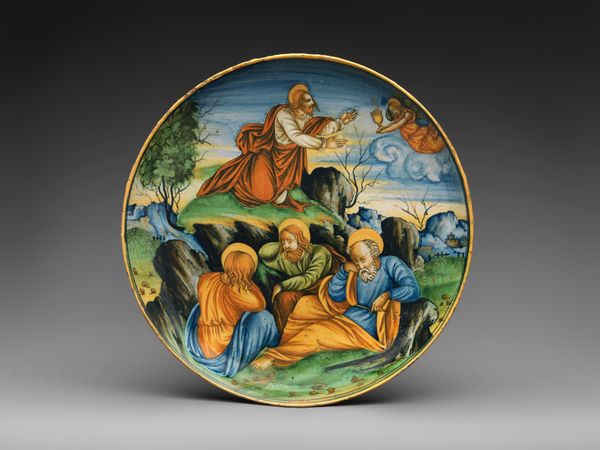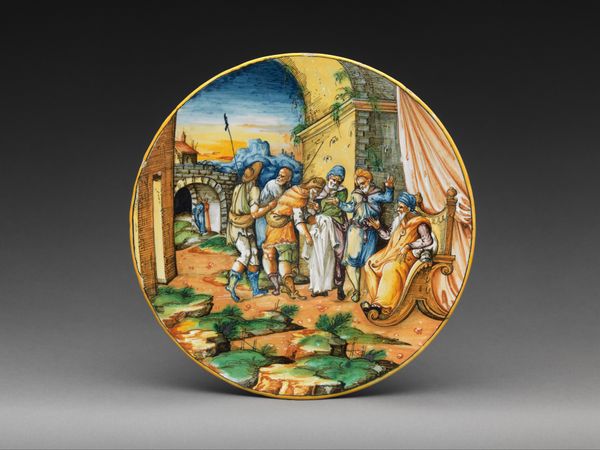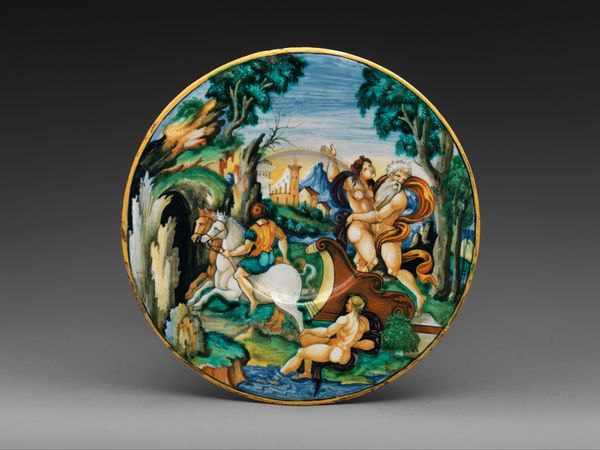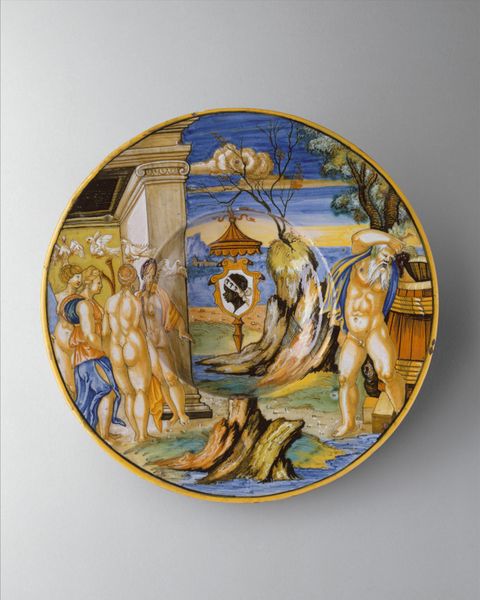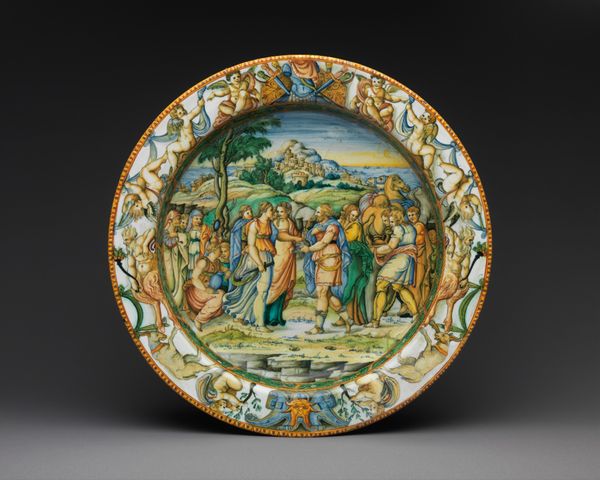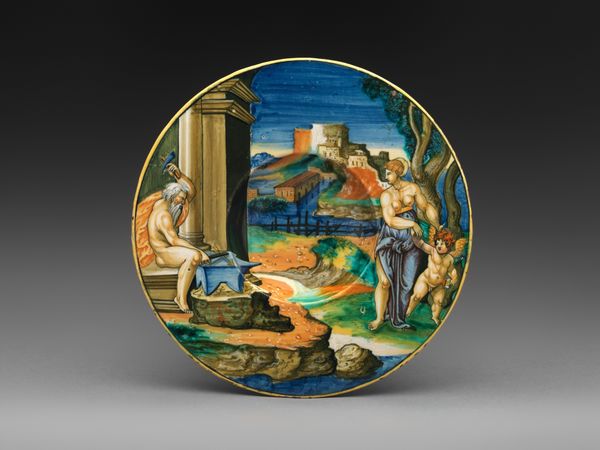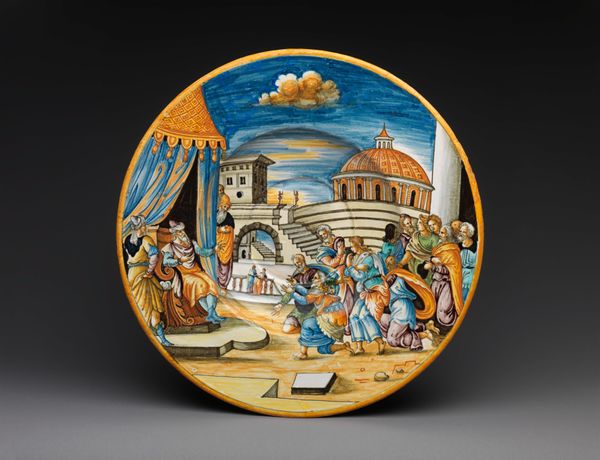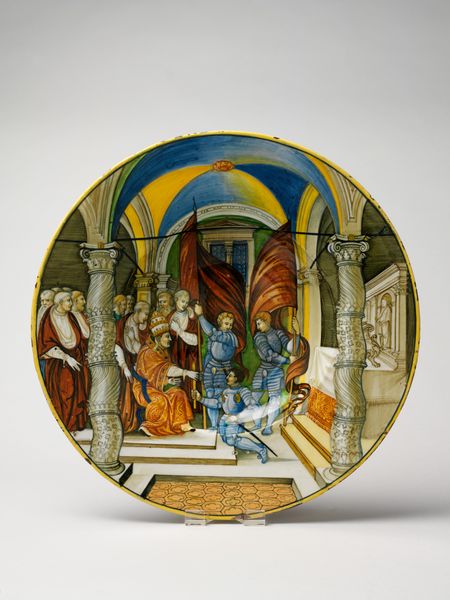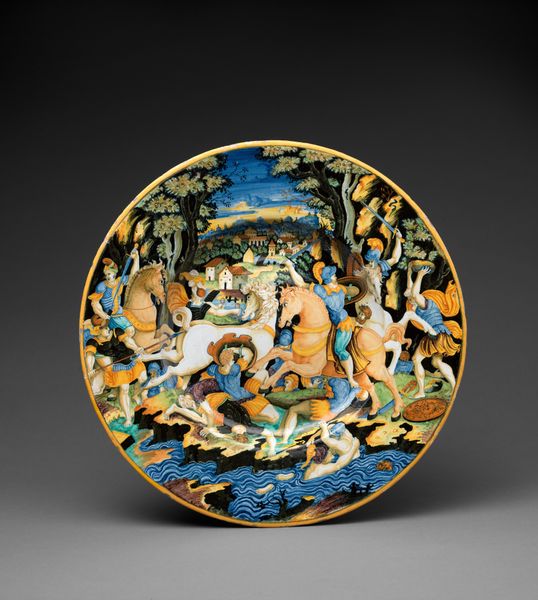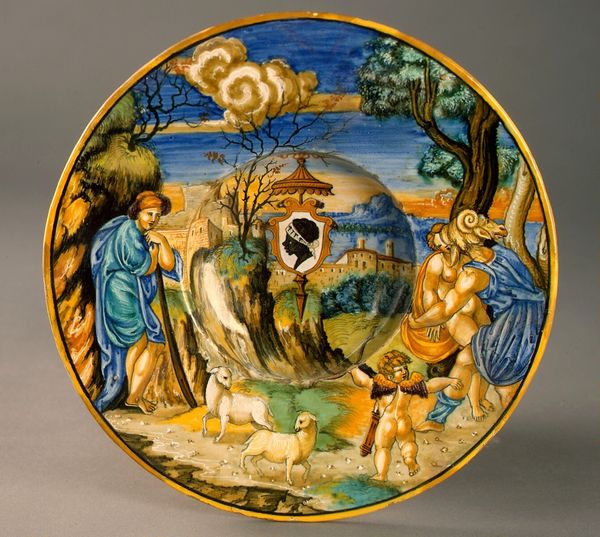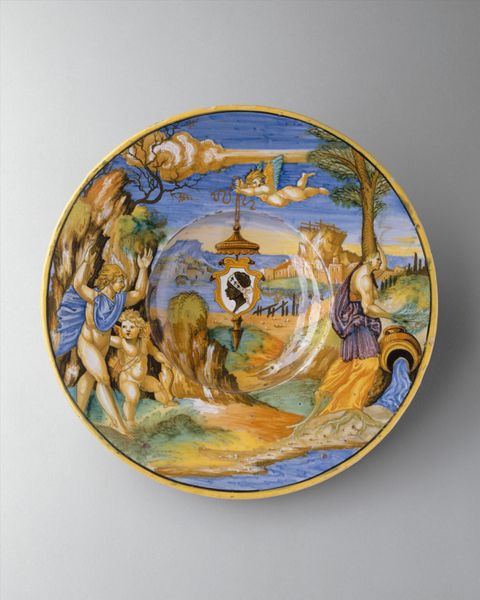
ceramic, sculpture
#
decorative element
#
allegory
#
ceramic
#
figuration
#
sculpture
#
men
#
history-painting
#
decorative-art
#
italian-renaissance
Dimensions: Overall (confirmed): 1 3/8 × 10 1/2 in. (3.5 × 26.7 cm)
Copyright: Public Domain
Editor: Here we have a ceramic plate from 1540-1550 by Francesco Durantino, currently housed at the Metropolitan Museum of Art. It depicts “The Continence of Scipio”. It’s incredible how much detail is packed onto such a small surface. How does this object speak to you? Curator: For me, it immediately raises questions about its production. We have to consider where the clay came from, who prepared it, the skilled labor involved in shaping and firing this plate. Was this artisan working independently, or as part of a larger workshop system? Who was the intended consumer? Editor: That’s a fascinating perspective. I was focused on the historical narrative and the figures, but I see what you mean. Thinking about it as a product shifts things. Does the choice of ceramic as a material impact the way the story is told, perhaps compared to, say, a painting? Curator: Absolutely. Ceramic is a more utilitarian material than canvas. This object likely functioned within a domestic sphere, intended for display, or even consumption. Consider how that practicality of ceramics contrasts with, or even undermines, the heroic narrative of Scipio’s continence. Were fine ceramics like this used in wealthy households, almost to signal virtue and good taste in conjunction with wealth? Editor: So, the material itself communicates meaning about consumption and class, alongside the overt story? Curator: Precisely. And furthermore, we must explore the sources that Durantino used for this design and their cultural significance, understanding his creative labor through a materialist lens. Editor: I never thought about Renaissance art in terms of labour and manufacturing like this. Thank you. Curator: Likewise, thinking about your interpretation allows us to see this as more than an artefact of its production; that's one layer. You make me see new possibilities for viewing even the simplest art object in a dynamic way.
Comments
No comments
Be the first to comment and join the conversation on the ultimate creative platform.

